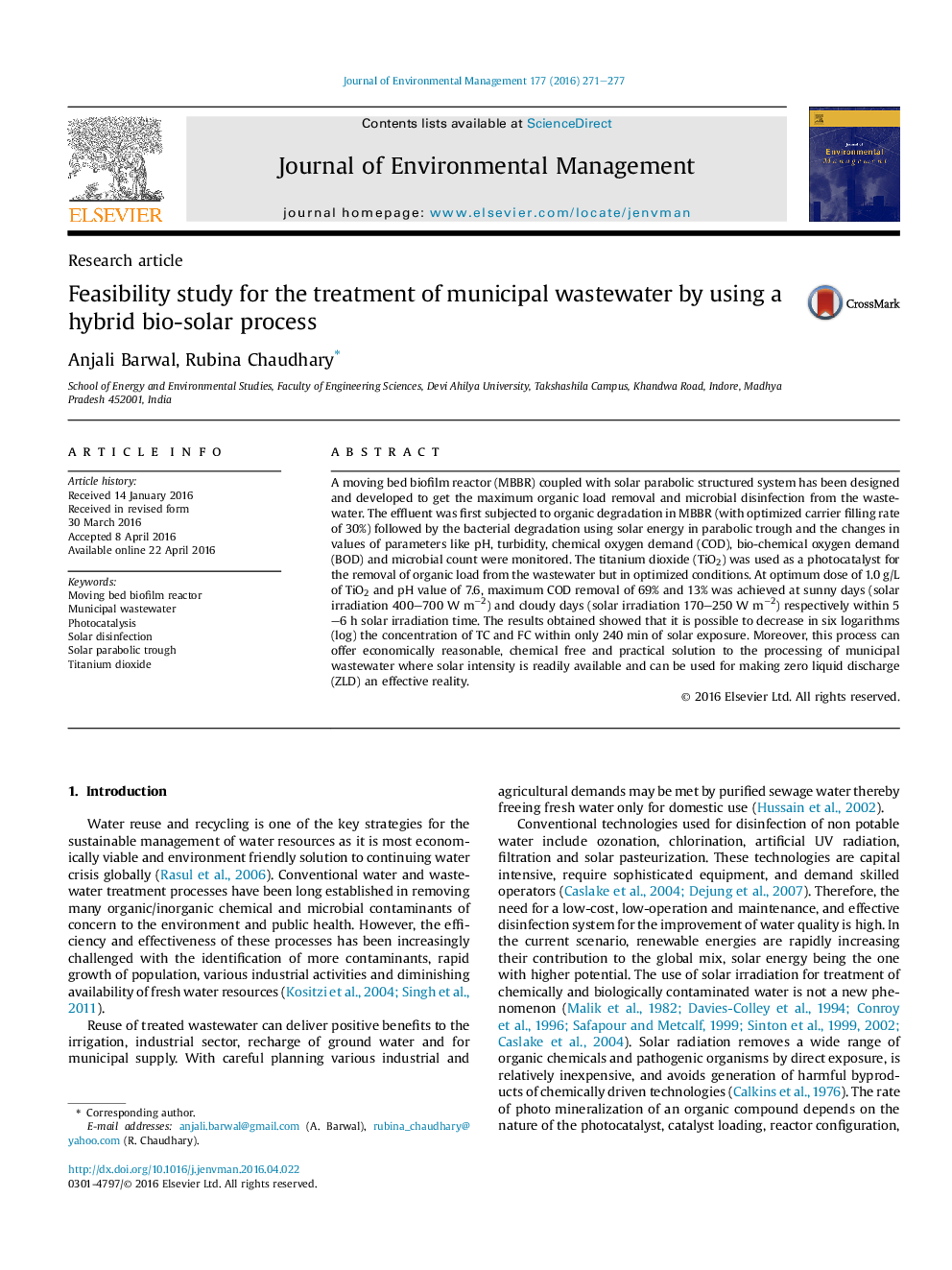| Article ID | Journal | Published Year | Pages | File Type |
|---|---|---|---|---|
| 7480439 | Journal of Environmental Management | 2016 | 7 Pages |
Abstract
A moving bed biofilm reactor (MBBR) coupled with solar parabolic structured system has been designed and developed to get the maximum organic load removal and microbial disinfection from the wastewater. The effluent was first subjected to organic degradation in MBBR (with optimized carrier filling rate of 30%) followed by the bacterial degradation using solar energy in parabolic trough and the changes in values of parameters like pH, turbidity, chemical oxygen demand (COD), bio-chemical oxygen demand (BOD) and microbial count were monitored. The titanium dioxide (TiO2) was used as a photocatalyst for the removal of organic load from the wastewater but in optimized conditions. At optimum dose of 1.0Â g/L of TiO2 and pH value of 7.6, maximum COD removal of 69% and 13% was achieved at sunny days (solar irradiation 400-700Â WÂ mâ2) and cloudy days (solar irradiation 170-250Â WÂ mâ2) respectively within 5-6Â h solar irradiation time. The results obtained showed that it is possible to decrease in six logarithms (log) the concentration of TC and FC within only 240Â min of solar exposure. Moreover, this process can offer economically reasonable, chemical free and practical solution to the processing of municipal wastewater where solar intensity is readily available and can be used for making zero liquid discharge (ZLD) an effective reality.
Keywords
Related Topics
Physical Sciences and Engineering
Energy
Renewable Energy, Sustainability and the Environment
Authors
Anjali Barwal, Rubina Chaudhary,
